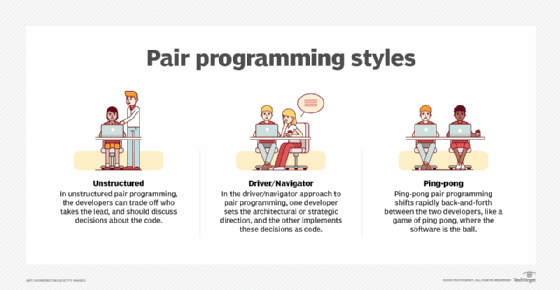Agile Pair Programming: Decoding the Agile Pairing Technique
In the collaborative universe of Agile development, the concept of pair programming emerges as a dynamic practice, fostering teamwork, shared knowledge, and enhanced code quality. Let's unravel the intricacies of Agile pair programming and explore why this technique has become a cornerstone in Agile methodologies.
The Essence of Agile Pair Programming
At its core, Agile pair programming involves two developers working collaboratively at a single workstation. The driver, responsible for writing the code, is complemented by the navigator, who reviews each line as it's written. The roles interchange frequently, ensuring a continuous exchange of ideas, insights, and skills.
Agile Pairing Dynamics
Knowledge Transfer: Pair programming is a powerful knowledge-sharing tool. It facilitates the transfer of skills, techniques, and domain knowledge between team members, contributing to a more resilient and versatile team.
Code Quality Boost: With two sets of eyes on the code, the likelihood of catching errors, bugs, or potential improvements increases significantly. The collaborative nature of pair programming promotes a higher standard of code quality.
Faster Problem Solving: Agile pairs bring diverse perspectives to problem-solving. When faced with challenges, the combined experience of both programmers often leads to quicker and more effective solutions.
Continuous Learning: The dynamic interchange of roles ensures that both programmers are consistently exposed to new concepts and coding styles. This continuous learning fosters professional growth within the team.
Pair Programming in Agile Methodologies
Extreme Programming (XP): In Extreme Programming, pair programming is a core practice. XP advocates for constant collaboration, and pair programming aligns seamlessly with this philosophy.
Scrum: While not a mandatory practice in "What is Agile", pair programming can be incorporated based on the team's preferences. Scrum encourages flexibility, allowing teams to adopt practices that enhance their collaboration and efficiency.
Kanban: Pair programming aligns well with the principles of Kanban, emphasizing continuous delivery and efficiency. Teams practicing Kanban may integrate pair programming to improve their flow of work.
Overcoming Challenges
While pair programming offers numerous benefits, it comes with its set of challenges. Addressing potential issues such as different work preferences, communication styles, and skill levels is essential to harness the full potential of this Agile technique.
Conclusion
Agile pair programming transcends the traditional boundaries of coding. It's a dynamic technique that not only improves code quality but also nurtures collaboration, knowledge sharing, and continuous learning within Agile teams. As teams embrace the Agile mindset, the pairing technique stands as a testament to the power of collective expertise, driving innovation and excellence in every line of code.


Comments
Post a Comment